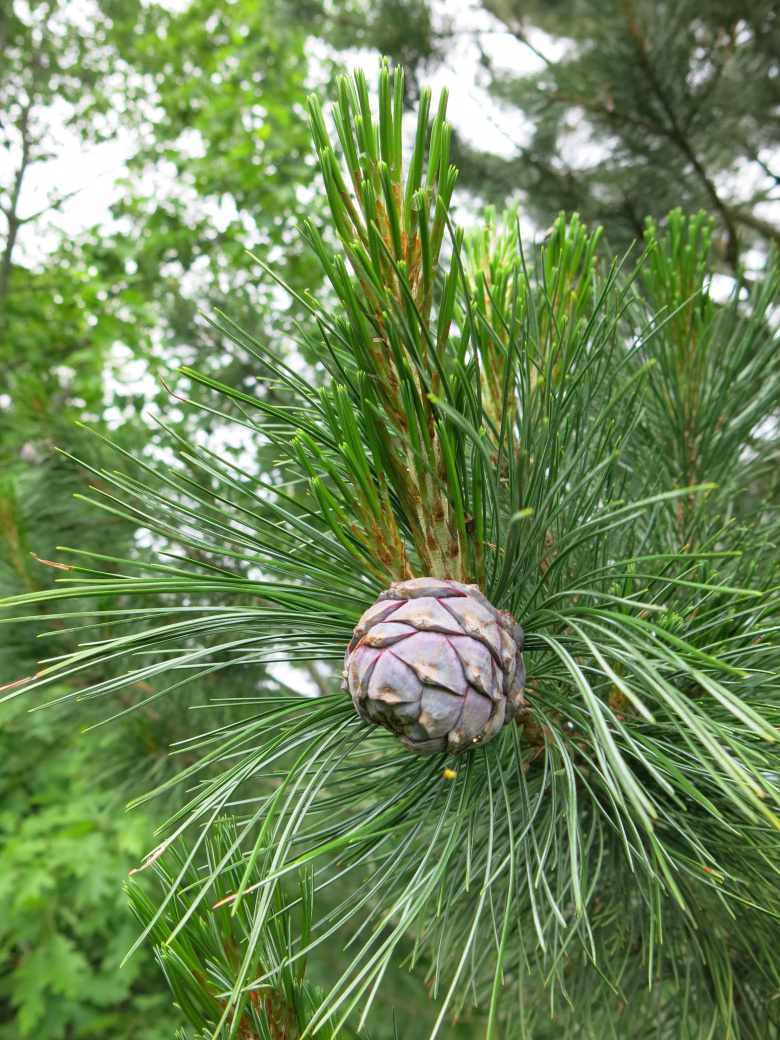The Arolla pine (P. cembra) is divided into two subspecies, the Swiss stone pine (P. cembra subsp. cembra) of the central and eastern European mountains, and the Siberian pine (P. cembra subsp. sibirica), which grows over a large range in Siberia, east of the Urals. These subspecies are separated by thousands of kilometres, but to the eye they differ only in the slightly longer cones and the shininess of the buds of the Siberian.
The Siberian pine is a beautiful, dense tree with a rounded crown; the needles - straight, stiff, and dark-green - are in bundles of five. The large, barrel-shaped cones fall entire, releasing their seeds as they rot. The seeds are rich in B-vitamin and other valuable nutrients, and are valuable as food to humans and wild animals.
The Siberian pine was one of Finland’s first imported ornamental trees, and it is still grown mainly as an ornamental, although at the end of the 1700s and after the famines of the late 1800s it was also grown for its seeds.
Siberian pines are slow-growing and long-lived trees which can live for 800-1200 years in their native habitat. Unfortunately, they are much shorter-lived in Finland and in any kind of shade they deteriorate rapidly while still young. This has been the fate of the plantings at Mustila along the Kausalantie road. The trees remain dense longer in completely open conditions. They thrive best in eastern and northern Finland.


